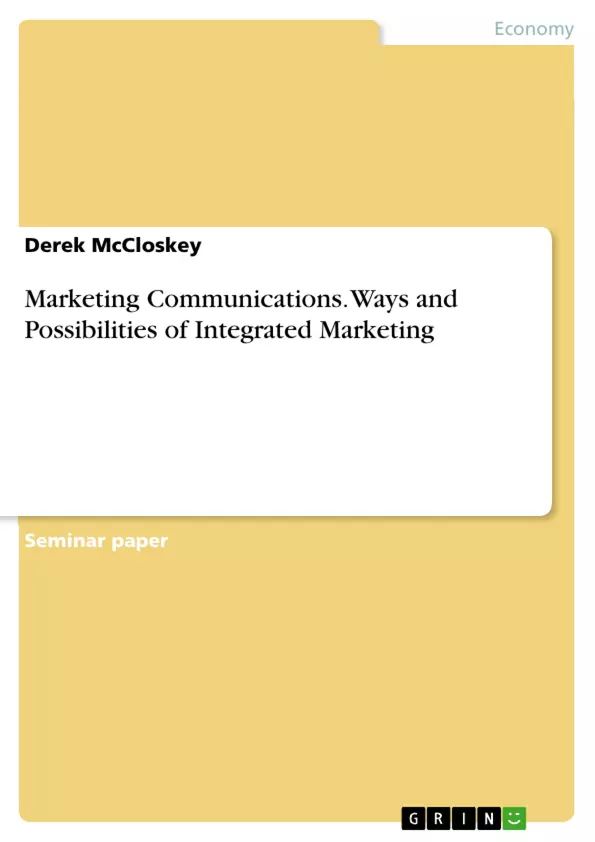Integrated approach to marketing has been around since the 1980’s, but as markets have developed and technologies have advanced so to have the breadth and depth of the communications.
This report seeks to firstly to understand integrated marketing communications and the mix used in retailing. Secondly, the report breaks down marketing communications methods into two sections, traditional methods and digital methods and seeks to understand how retailers use the individual elements.
Finally, the report will conclude that retailers need to be present in as many formats as possible and that the challenge for the future, is learning how to embrace new technologies to harness better communications with consumers.
Inhaltsverzeichnis (Table of Contents)
- Introduction
- What is Integrated Marketing?
- Integrated Marketing Communications Mix in Retailing
- Advertising
- Sales Promotion
- Digital Marketing
- Public Relations
- Personal Selling
- Defining Above and Below the Line Marketing
- What are ATL and BTL Activities
- Communications Methods Used in Retail
- Price
- Assortment
- Company Image
- Traditional Methods of Marketing Communications
- Television
- Radio
- Press and Magazines
- Outdoor Advertising
- Personal Selling and Live Advertising
- Digital Marketing – New Media
- Retailer Websites
- Search Engine Optimization (SEO) and Paid Online Advertising Banners
- Social Media Marketing (SMM)
- Email Marketing
- Mobile Marketing
- Conclusion
Zielsetzung und Themenschwerpunkte (Objectives and Key Themes)
This report examines the concept of integrated marketing communications and its application in the retail sector. It aims to understand how retailers effectively utilize various communication methods, both traditional and digital, to connect with their target audiences.- The evolution and definition of integrated marketing communications (IMC)
- The role of different communication tools in the retail marketing mix
- The shift towards digital marketing and the emergence of new media
- The importance of being present across multiple formats to reach diverse audiences
- The challenge of embracing new technologies for enhanced consumer communication.
Zusammenfassung der Kapitel (Chapter Summaries)
The report begins by exploring the concept of integrated marketing communications (IMC) and its historical development. It discusses how market changes led to the adoption of a more integrated approach to marketing communications, citing the American Association of Advertising Agencies (4A's) definition of IMC. The report then dives into the application of IMC within the retail sector. It highlights the various communication tools retailers employ, including advertising, sales promotion, digital marketing, public relations, and personal selling. Furthermore, the report distinguishes between Above-the-Line (ATL) and Below-the-Line (BTL) marketing activities, explaining their distinct features and applications. It analyzes specific traditional marketing methods like television, radio, press and magazines, outdoor advertising, and personal selling. Finally, the report explores the rising significance of digital marketing in the retail landscape. It examines various digital channels, including retailer websites, search engine optimization (SEO), paid online advertising, social media marketing (SMM), email marketing, and mobile marketing.Schlüsselwörter (Keywords)
The report delves into the core concepts of integrated marketing communications, encompassing traditional and digital marketing methods, particularly within the retail industry. Key terms include integrated marketing communications (IMC), ATL and BTL marketing, advertising, sales promotion, public relations, personal selling, digital marketing, SEO, social media marketing, and mobile marketing. The report explores the strategic application of these concepts in reaching and engaging target audiences, emphasizing the importance of a comprehensive and coordinated approach to marketing communications.- Arbeit zitieren
- Derek McCloskey (Autor:in), 2018, Marketing Communications. Ways and Possibilities of Integrated Marketing, München, GRIN Verlag, https://www.grin.com/document/428665



